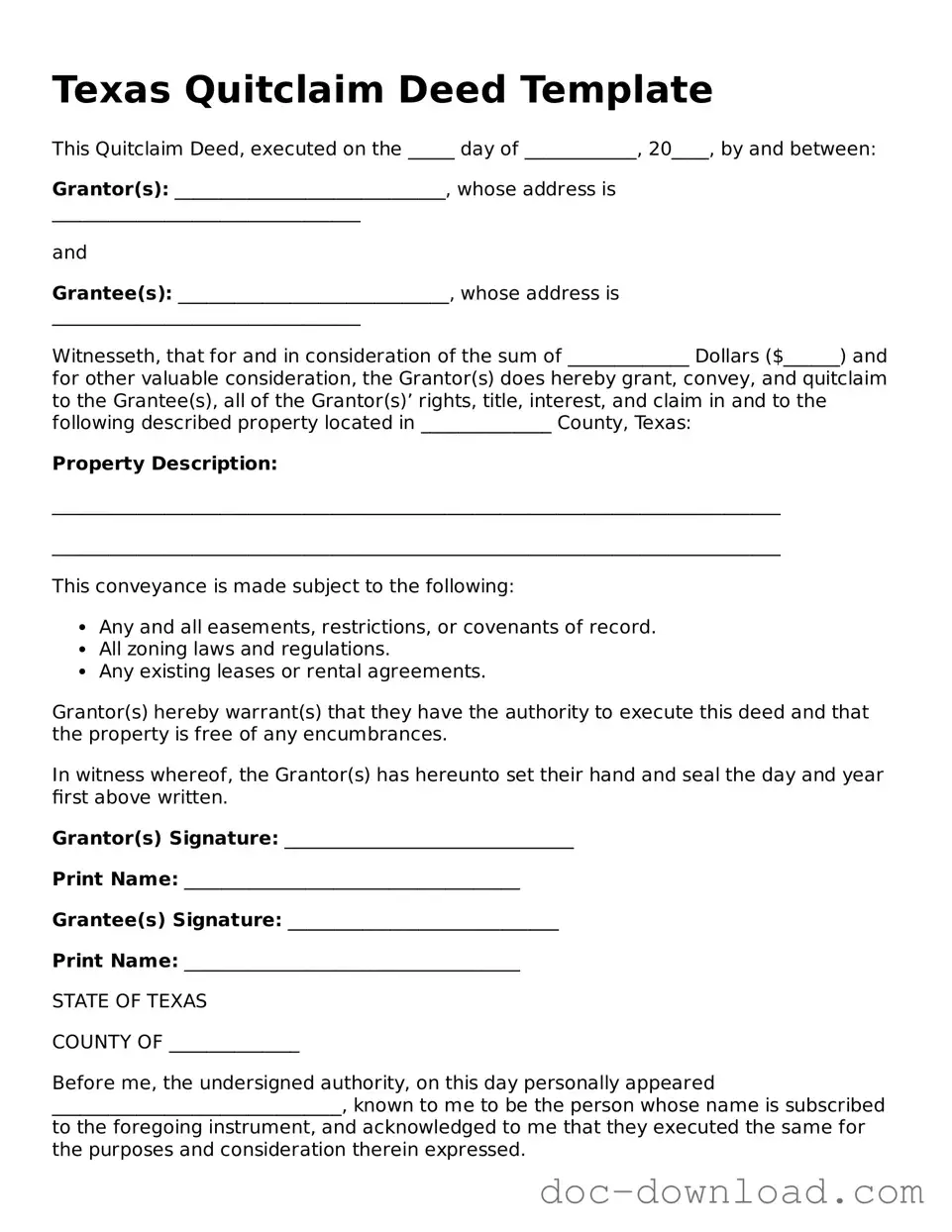Texas Quitclaim Deed Template
This Quitclaim Deed, executed on the _____ day of ____________, 20____, by and between:
Grantor(s): _____________________________, whose address is _________________________________
and
Grantee(s): _____________________________, whose address is _________________________________
Witnesseth, that for and in consideration of the sum of _____________ Dollars ($______) and for other valuable consideration, the Grantor(s) does hereby grant, convey, and quitclaim to the Grantee(s), all of the Grantor(s)’ rights, title, interest, and claim in and to the following described property located in ______________ County, Texas:
Property Description:
______________________________________________________________________________
______________________________________________________________________________
This conveyance is made subject to the following:
- Any and all easements, restrictions, or covenants of record.
- All zoning laws and regulations.
- Any existing leases or rental agreements.
Grantor(s) hereby warrant(s) that they have the authority to execute this deed and that the property is free of any encumbrances.
In witness whereof, the Grantor(s) has hereunto set their hand and seal the day and year first above written.
Grantor(s) Signature: _______________________________
Print Name: ____________________________________
Grantee(s) Signature: _____________________________
Print Name: ____________________________________
STATE OF TEXAS
COUNTY OF ______________
Before me, the undersigned authority, on this day personally appeared _______________________________, known to me to be the person whose name is subscribed to the foregoing instrument, and acknowledged to me that they executed the same for the purposes and consideration therein expressed.
Given under my hand and seal this _____ day of ____________, 20____.
Notary Public Signature: _____________________________
My Commission Expires: _______________
